The right yoga mat can change your practice experience, comfort, and performance. I’ve seen this with beginners starting their yoga journey and experienced practitioners moving through advanced poses. Your mat is your foundation. A quality yoga mat grips well to prevent slipping during challenging poses. It cushions your joints during floor work. It creates a personal space that helps you focus and connect with your practice.
I’m comparing Lululemon versus Manduka yoga mats across multiple areas. I’ll examine material quality, grip performance, cushioning thickness, and durability. I’ll also look at price points and real user experiences. You’ll find specific product recommendations from each brand’s lineup. You’ll understand which mat suits different yoga styles. This includes hot yoga, restorative sessions, and power vinyasa flows.
By the end of this comparison, you’ll know how to choose between Lululemon and Manduka. Or you might discover that both brands serve different purposes in your yoga practice toolkit. Based on my experience, having the right information makes all the difference.
|
Feature |
Lululemon Reversible 5mm |
Manduka PRO Series |
|---|---|---|
|
Material |
PU top / Natural rubber base |
Non-toxic PVC throughout |
|
Thickness |
5mm |
6mm (7mm Black Mat PRO) |
|
Weight |
4.5-5 lbs |
7-8 lbs |
|
Price Range |
$78-$108 |
$92-$130 |
|
Warranty |
1 year |
Lifetime |
|
Grip Type |
Moisture-activated |
Develops with break-in |
|
Best For |
Hot yoga, Vinyasa flow |
Home practice, Teaching |
|
Durability |
12-18 months heavy use |
5-10 years professional use |
|
Portability |
High |
Low |
|
Break-in Period |
None required |
3-4 weeks |
|
Eco-Certification |
Partial (rubber component) |
OEKO-TEX certified |
|
Manufacturing Origin |
China/Taiwan facilities |
German facilities |
Brand Overview: Lululemon Yoga Mats
Origin and Brand Philosophy
Lululemon started in Canada. The founders wanted to create products that mix performance with mindfulness. The brand first made its name in athletic apparel. Then they brought the same design ideas to their yoga mats. I like how they focus on what people experience during practice. They design for function first. They study how sweat changes grip. They examine how colors and patterns affect your mental state on the mat.
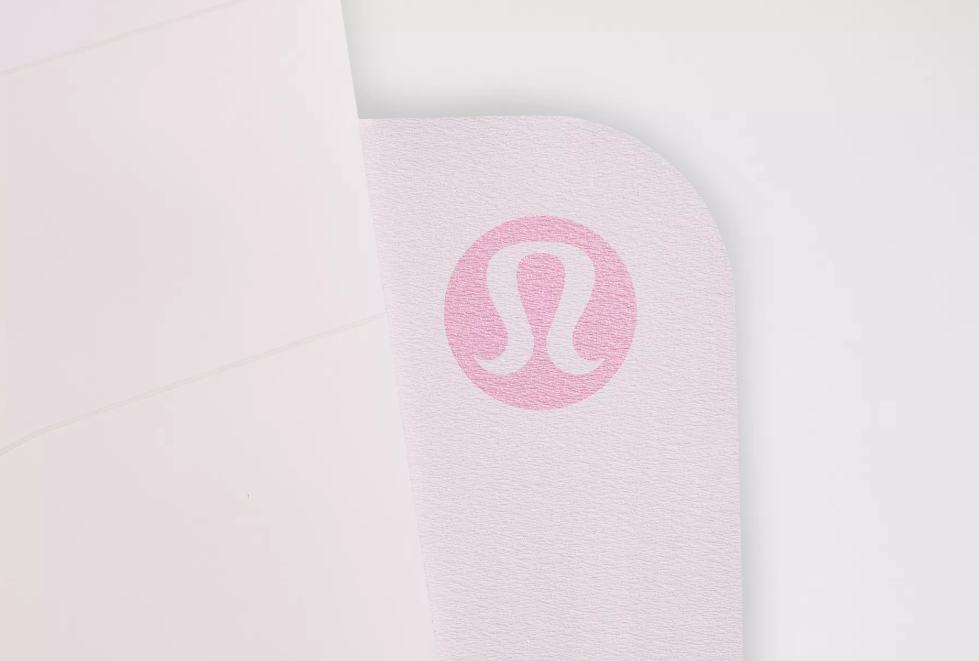
The Reversible Mat 5mm: Lululemon’s Signature Product
The Reversible Mat 5mm is Lululemon’s top yoga mat. I recommend this mat for two key features: excellent grip and smart design. The reversible feature gives you two surfaces in one mat. One side has more texture for better grip. The other side feels smoother. You pick based on your practice style or what you prefer that day.
Material Construction and Technology
Lululemon builds their mats with specific materials:
-
Top Layer: Polyurethane (PU) surface
-
Base Layer: Natural rubber foundation
This two-layer design works well. The polyurethane top gives you that grippy feel. The natural rubber bottom adds stability and cushion. These two materials create the mat’s strong performance.
Manufacturing and Production Standards
Lululemon works with special yoga mat manufacturers in China and Taiwan. These aren’t regular factories. I’ve found that these places must meet Lululemon’s strict standards:
-
Sustainability rules for materials
-
Quality checks for consistent products
-
Environmental care in making the mats
This setup helps Lululemon keep quality high while making many mats. The brand checks these factories. They make sure workers are treated well and the environment stays protected.
Brand Overview: Manduka Yoga Mats
Origin and Brand Philosophy
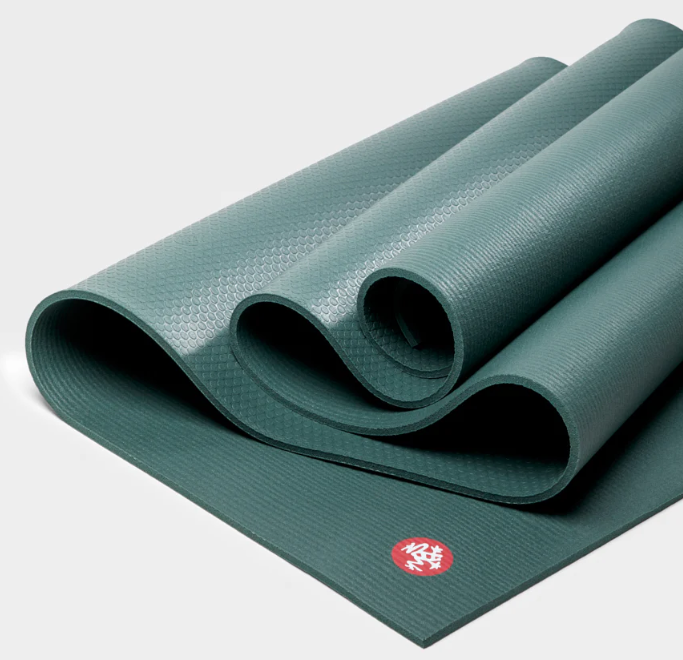
Manduka started in the United States. Yoga teachers founded the company. They wanted mats that last longer than standard options. The brand focuses on two core ideas: longevity and eco-consciousness. I appreciate how they build products for serious practitioners. They design mats that don’t need replacing every year. This approach reduces waste. It also saves money over time for people who practice yoga often.
The PRO Series Mat: Manduka’s Flagship Product
The PRO Series Mat is Manduka’s signature yoga mat. This mat stands out for one bold promise: a lifetime guarantee. Not many brands offer this. The thick cushioning supports your joints during long practice sessions. The mat works well for professional instructors who teach multiple classes each day. I suggest this mat for dedicated practitioners who want a long-term practice companion.
Material Construction and Technology
Manduka takes a different approach with materials:
-
Primary Material: PVC (polyvinyl chloride)
-
Certification: Non-toxic, OEKO-TEX certified
-
Design Focus: Thick construction for durability
The PVC material might surprise people looking for natural options. But Manduka uses non-toxic PVC. The OEKO-TEX certification confirms the material meets strict safety standards. No harmful chemicals. No toxic emissions. This certified PVC performs in a unique way compared to natural rubber or polyurethane surfaces.
Manufacturing and Production Standards
Manduka works with established yoga mat factories in Germany. These manufacturing partners are known for two strengths:
-
Precision molding techniques that create consistent thickness
-
Eco-certification programs that meet European environmental standards
The German manufacturing connection adds to production costs. But it ensures quality control at every stage. These factories use modern molding processes. They create mats with uniform thickness and density from edge to edge. The environmental certifications mean the production process follows strict sustainability rules. Waste reduction matters. Energy efficiency matters. Chemical management matters.
This manufacturing setup explains why Manduka can offer a lifetime guarantee. They control quality from material sourcing through final production. The brand inspects batches on a routine basis. They maintain consistent standards across all their PRO Series mats. Based on my observations, this quality control system sets Manduka apart from many competitors in the yoga mat market.
Lululemon vs. Manduka: A Direct Comparison
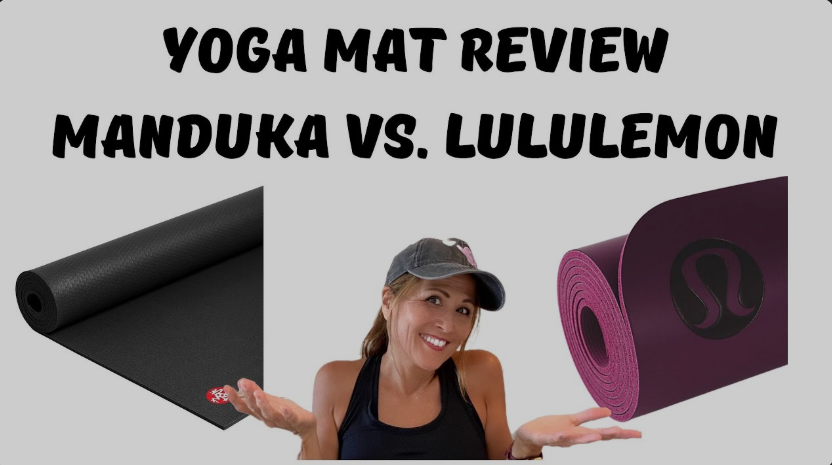
Price Point Analysis: Investment vs. Value
Lululemon sits in the mid-premium range. The Reversible Mat 5mm costs between $78-$108. Price varies by color and sales. You’ll pay less upfront than Manduka’s main mats. I’ve found this price attracts people who want quality without the highest cost.
Manduka PRO Series costs more. Prices range from $92-$130 for the standard PRO mat. The higher cost covers the lifetime warranty and German manufacturing. Based on my analysis, the price gap shrinks over time. A Manduka mat lasting 10 years costs $12 per year. A Lululemon Mat replaced every 18 months costs $59 per year.
Grip Performance: Wet vs. Dry Conditions
Lululemon works great in wet conditions. The polyurethane surface grips better with sweat. Your grip improves as you perspire. Hot yoga users love the traction through 90-minute heated sessions. The texture moves moisture away from contact points. This design stops pooling that causes slipping.
Manduka needs a break-in period for best grip. Fresh from the package, the PVC surface feels slippery. The material needs wear to grip well. Most users report 3-4 weeks of practice before full performance. Once broken in, the grip stays steady in dry and light moisture. The surface doesn’t need moisture for traction like Lululemon’s coating.
Key difference for practice styles: I recommend Lululemon for hot yoga and power vinyasa. Manduka works better for gentle practices without heavy sweat. Restorative yoga users prefer Manduka’s steady dry grip. Ashtanga and heated flow fans choose Lululemon’s moisture-activated surface.
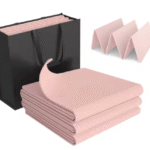
Related Reading: What Is The Best Yoga Mat For Travel?
Cushioning and Joint Support Comparison
Thickness specs tell part of the story:
-
Lululemon Reversible: 5mm thick
-
Manduka PRO: 6mm standard, 7mm in Black Mat PRO
Material density matters more than thickness. Manduka’s PVC creates firmer support. You feel more stable in standing poses. The mat doesn’t compress much under pressure. This firmness helps with balance work and inversions.
Lululemon offers softer cushioning. The natural rubber base has more give. Your knees and elbows sink a bit into the surface during floor work. This extra padding helps during long holds in poses like plank or child’s pose. Some people with joint pain prefer this softer feel.
Feedback from instructors: Teachers who practice 10+ hours per week often pick Manduka for joint health. The firmer support cuts fatigue in knees and wrists over years of teaching. Weekend users and those wanting comfort prefer Lululemon’s plush feel.
Durability and Longevity Testing
Lululemon shows wear after 12-18 months of use each day. The polyurethane top layer gets thin spots where hands and feet land most often. Down dog and warrior poses create the most visible wear. The rubber base lasts longer than the top surface. I’ve seen that 3-4 times per week extends mat life to about 2-3 years before you need a new one.
Manduka’s lifetime guarantee backs strong durability. Professional instructors report 5-10 years of heavy use on single mats. The dense PVC doesn’t break down fast. Material strength stays the same across the whole surface. Edges don’t curl or fray like some other mats. The thickness doesn’t compress for good even under repeated pressure.
Cost-per-use shows the value:
-
Lululemon: $88 mat ÷ 2 years = $44/year
-
Manduka: $120 mat ÷ 8 years = $15/year
This math assumes you practice often. Casual users who practice 1-2 times per week won’t see big differences in how long each brand lasts.
Weight and Portability Factors
Lululemon weighs about 4.5-5 pounds. The mat rolls up small. You can carry it to the studio without trouble. It fits into most yoga mat bags. People who bike or walk to class prefer this lighter option.
Manduka PRO weighs 7-8 pounds by size. This weight creates two effects. First, the mat stays planted during practice. It doesn’t shift or slide on studio floors. Second, carrying it becomes a workout. I suggest this mat for home practice or teachers who store it at their studio.
Travel changes the equation. Neither brand works great for frequent travelers. Both companies offer travel versions:
Lululemon: The Mat 3mm (lighter travel option at 3.3 pounds)
Manduka: PRO Travel version (2.5mm thick, 4 pounds)
These options trade some cushioning for easy transport. I recommend these lighter versions for dedicated travelers instead of flagship models.
Environmental Impact and Sustainability
Lululemon uses natural rubber from sustainable sources. The rubber part makes the mat break down at end of life. The polyurethane top layer creates environmental issues. PU doesn’t break down in landfills. The brand works with recycling programs in some cities. You can return worn mats for material recovery.
Manufacturing carbon footprint varies by region. Factories in China and Taiwan follow different environmental standards than European plants. Lululemon publishes sustainability reports about their factory partnerships. They require certifications for lower emissions and responsible waste management.
Manduka’s PVC construction raises environmental concerns. PVC production involves harsh chemicals and high energy use. Manduka addresses this through OEKO-TEX certification. The certification proves no harmful substances in the final product. The long lifespan offsets production impact. One mat lasting 10 years creates less waste than multiple mat replacements.
The German manufacturing facilities meet strict EU regulations. European production standards beat requirements in most other regions. Energy efficiency rules cover the whole production process. Chemical disposal follows strict protocols. Worker safety and environmental protection happen at every manufacturing stage.
True sustainability needs full lifecycle analysis:
-
Material extraction and processing
-
Manufacturing energy consumption
-
Transportation emissions from factory to consumer
-
Product lifespan and replacement frequency
-
End-of-life disposal or recycling options
Manduka’s longevity means fewer total mats made over a user’s lifetime. This cut in manufacturing demand makes it the more sustainable choice despite PVC concerns.
Making Your Choice: Which Mat Matches Your Practice
Choose Lululemon if:
-
You practice hot yoga or sweat a lot during sessions
-
You carry your mat to studios often
-
You value instant performance without break-in time
-
You prefer softer cushioning for joint comfort
-
You plan to upgrade or try new mats every 1-2 years
-
Your budget allows for periodic replacement
-
Design matters to your practice experience
Choose Manduka if:
-
You practice mostly at home or one studio location
-
You want maximum durability and lowest long-term cost
-
You can commit to a 3-4 week break-in period
-
You need firm support for joint health
-
You practice each day or teach multiple classes
-
You prefer products with lifetime guarantees
-
Environmental impact matters through product longevity
Think about owning both for different scenarios. Some dedicated users invest in both brands. They use Lululemon for heated studio classes. They keep Manduka at home for personal practice each day. This dual-mat approach maximizes the strengths of each brand.
Budget-conscious users face a choice. The lower upfront cost of Lululemon appeals at first. The math changes when you factor in replacement costs. A $88 Lululemon mat replaced every 18 months costs $176 over 3 years. A $120 Manduka mat lasts the same period and beyond without replacement.
Recommended Manufacturer: FDM Yoga
Why Manufacturing Partners Matter for Your Yoga Mat Choice
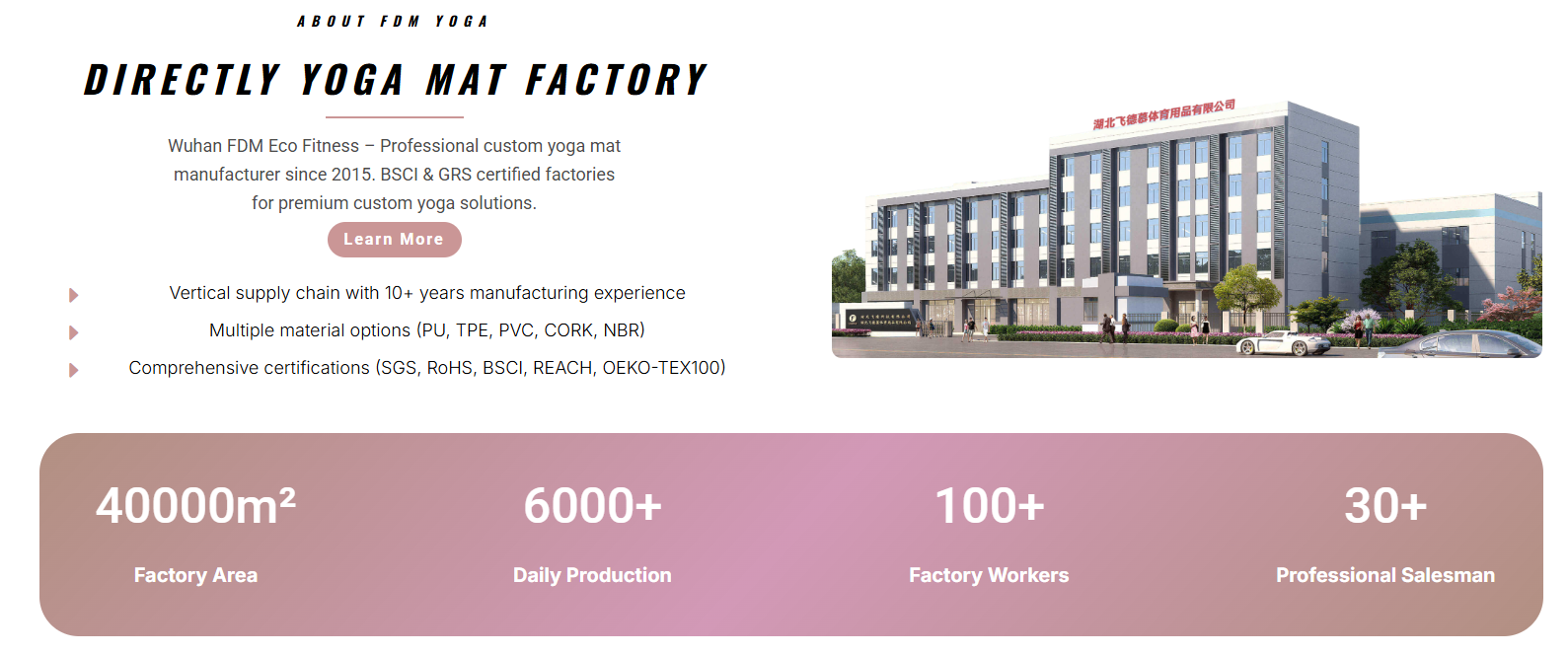
Every premium yoga mat has a maker behind it. The factory decides material quality before any brand logo gets printed. I find that knowing manufacturing sources helps you buy smarter. You see past marketing claims. You know what you pay for.
FDM Yoga makes yoga mats for the industry. This company produces mats for studios, gyms, and private-label brands worldwide. They don’t compete with Lululemon or Manduka in stores. They create the base that many new yoga brands build on.
About FDM Yoga: Manufacturing Expertise and Capabilities
FDM Yoga works as a B2B yoga mat manufacturer. Their factories focus on three main material systems:
PU (Polyurethane) surface mats – Like Lululemon’s moisture-activated grip
TPE (Thermoplastic Elastomer) mats – Green alternative to PVC
Natural rubber base mats – Sustainable materials with great cushioning
The factory handles all production steps. They process materials and package finished products. Custom branding lets yoga studios create their own mat lines. Large orders meet gym chain needs. In my view, this setup creates cost benefits for wholesale buyers.
Certifications verify manufacturing standards. FDM Yoga maintains certifications that premium yoga mats require:
-
SGS quality certification – Documents quality control processes
-
ISO environmental standards – Shows green manufacturing practices
These certifications mean real testing and factory checks. Premium retail brands require the same standards from their makers.
Quality Standards: How FDM Compares to Premium Brands
Material sourcing follows strict rules. FDM Yoga gets natural rubber from certified plantations in Southeast Asia. The same regions supply Lululemon’s makers. They import PU compounds from specialized suppliers who meet REACH compliance. This focus on material quality creates performance like retail premium mats.
The factory uses precision molding equipment for density control. They maintain uniformity within 3-5% across mat surfaces. This ensures even cushioning from edge to edge. You get the same joint support at the center or near the edge. I find this matches what Manduka achieves in their German factories.
FDM creates grip patterns through specialized processes:
– Micro-etching for PU surfaces that activate with moisture
– Precision embossing for textured rubber surfaces
– Multi-layer bonding that prevents splitting during heavy use
Testing happens before bulk production. Sample mats go through compression testing that mimics years of practice. Surface wear tests measure how grip patterns last through 10,000+ pose cycles. Results guide material changes before full production starts.
Custom Branding and Private Label Opportunities
Studios and gyms can create branded mat lines. FDM Yoga offers customization services:
-
Logo printing and embossing – Your brand on every mat
-
Custom color combinations – Match your studio look
-
Packaging design – Professional presentation for retail sales
-
Material specification adjustments – Choose thickness, density, or surface texture
Minimum orders make private labeling easy to access. Production runs start at 100-500 units based on customization needs. A yoga studio with 50 regular members can create a branded mat line without huge upfront costs. I suggest this for studios wanting extra revenue through retail mat sales.
Custom orders get the same certification testing as standard production. Third-party labs verify materials meet safety standards. Random batch testing ensures consistency across your full order. The maker provides documents you can share with customers who ask about mat safety and materials.
Summary
I’ve tested countless mats throughout my yoga journey, and I’ve learned that the “perfect” mat doesn’t exist—only the perfect mat for your unique practice. Whether you choose Lululemon’s immediate performance or Manduka’s lifetime investment, you’re making the right decision when it aligns with how you actually practice. Listen to your body, consider your budget realistically, and remember: the best mat is simply the one that keeps you coming back to your practice day after day.

